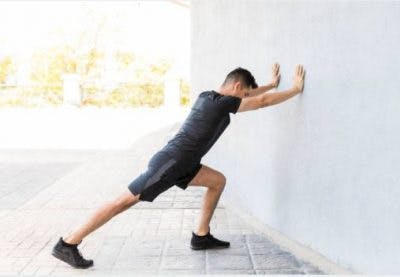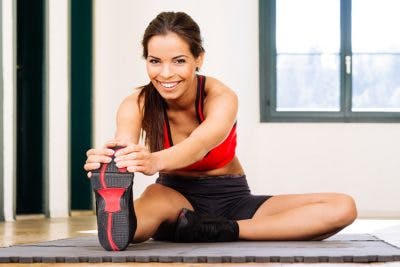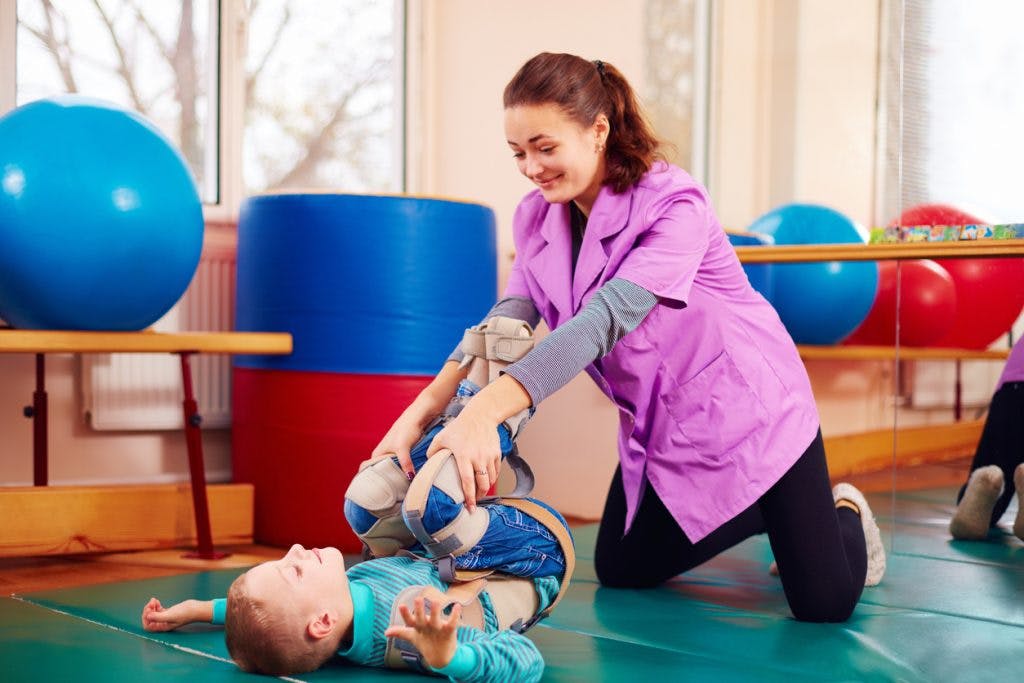Wondering what the best leg exercises for individuals with cerebral palsy are?
Cerebral palsy can result in mild to severe motor impairment.
Some people will have motor impairment in their legs, only on one side, or only in their upper bodies. Everyone experiences cerebral palsy differently.
This article will provide several leg exercises for cerebral palsy patients and suggest adjustments you can make to accommodate to your specific motor impairment.
Passive Range of Motion Leg Exercises for Cerebral Palsy
Passive range of motion exercises are performed by a caregiver or physical therapist moving your joints through a pain-free range of motion.
You don’t need to have active movement in your arms or legs to participate in passive exercises.
Passive range of motion exercises are beneficial for individuals with severe cerebral palsy who don’t yet have the ability to control their movements.
Benefits of passive exercise include:
- Increased joint range of motion
- Improved circulation
- Muscle stimulation
- Increased flexibility
1. Knee Flexion and Extension
Lay down flat and have your caregiver lift your leg and bend it towards the chest.
Hold for a few seconds and then straighten the leg back out. Repeat 3-5 times and then switch to the other leg.
2. Hip Rotations
Just like the previous exercise, lay down flat and have your caregiver bend one knee.
With one hand on the thigh and the other below the calf, gently move the knee in large circles so that it is circling around the hip joint.
After a few rotations, switch directions.
3. Ankle Rotations
The caregiver should hold the bottom of the foot with one hand and the ankle with the other hand.
Stabilize the ankle and rotate the foot clockwise and counterclockwise.
4. Hip Abductions
Lay down flat and have your caregiver gently pull one leg out to the side and then bring it back in.
The leg should not be overly extended, just until the caregiver can feel the body’s natural resistance.
Want 19 pages of CP recovery tips in PDF form? Click here to download our free illustrated ebook now (link opens a pop up for uninterrupted reading)
Leg Stretches for Cerebral Palsy
Over 75% of cerebral palsy patients have spastic cerebral palsy, which is characterized by constantly high muscle tone.
The most effective leg stretches for cerebral palsy patients are going to work on gently lengthening tight muscles.
If you have limited leg control but full upper body control, we highly recommend using a resistance band to stretch your legs.
Place the band under your foot or any part of your leg and then pull with your arm to maneuver and stretch it. Pull gently and hold the stretch for 15-20 seconds.
Next, we’ll go over some more active forms of stretching for those that have a bit more leg control.
5. Calf Stretch

Make sure that you have something to lean against (i.e. a wall, a chair, etc.) to help keep you balanced.
Place one foot a step behind you and then slowly bring your heel down.
To provide a deeper stretch, bring your leg back further. To make it easier, bring your leg closer to the rest of your body.
6. Butterfly Stretch

Sit with your knees bent and the bottoms of your feet pressed together
Place your hands over your feet and then move your upper body forward, towards the feet.
You should feel a stretch in the insides of your thighs.
Keep your back straight and bend from the hip.
To make this stretch more challenging, bring the feet closer towards your body.
To make this stretch easier, move the feet further away from the body.
7. Hamstring Stretch

Sit on the floor with one leg straight and the other bent to the side so that the bottom of the foot is touching the inner thigh of the opposite leg.
Extend your arms out, reach towards the foot of the straight leg, and then hold.
Leg Exercises for Cerebral Palsy
You want to keep your legs strong to maintain blood flow and flexibility.
To make any of these leg exercises more challenging, consider wearing weighted cuffs to add resistance.
8. Leg Lifts
Lay down with one leg bent and the sole of your foot against the floor.
Keeping the other leg straight, slowly raise it up, hold, and then bring it back down.
To make this exercise more challenging, keep the foot in the air even when it is lowered close to the ground, but not touching the floor.
9. Seated Marching

For the next exercise, sit at the edge of your seat and alternate lifting your feet off the floor.
To make it more challenging, lift your feet higher.
The Power of Walking
When you have decreased control in your legs, walking can be challenging.
You have you sustain the weight of your body, shift your weight from side to side, and keep a steady pace.
Additionally, many children with cerebral palsy develop abnormal gait patterns due to spasticity, so developing ways to reduce spasticity and then promoting correct walking form is essential.
10. Walking in a Pool

Water has 2 properties that make it ideal for muscle strengthening.
Buoyancy is what makes you feel lighter and keeps you afloat. It helps you practice walking without all your weight pressing down on your joints. Therefore, you can focus on perfecting your form and then transition out of the water.
Viscosity is what makes it difficult to walk quickly underwater. It helps strengthen the muscles by making you push against the water’s resistance.
11. Walking on Sand

Ever noticed how much more tiring it is to walk on sand?
Sand is loose, so every time you take a step, the pressure causes the surface beneath you to move around.
In other words, more energy is required to walk on sand because the surface is less stable.
12. Walking Uphill
Walking on any sort of incline (like a flight of stairs or a hill) is always going to require more energy because you have to work against gravity and lift yourself up.
The steeper the incline, the more energy you have to use for each step.
Cerebral Palsy and Exercise
Being physically active may be more difficult and exercises may take longer for people with cerebral palsy, but movement promotes flexibility.
Neuroplasticity is the brain’s ability to rewire itself and adapt. When you regularly repeat an exercise, neuroplasticity is stimulated, and neurons fire along new pathways.
The more you stimulate neuroplasticity, the easier an exercise will become.
Remember, any movement is better than no movement, and every little bit of practice counts. Good luck!












